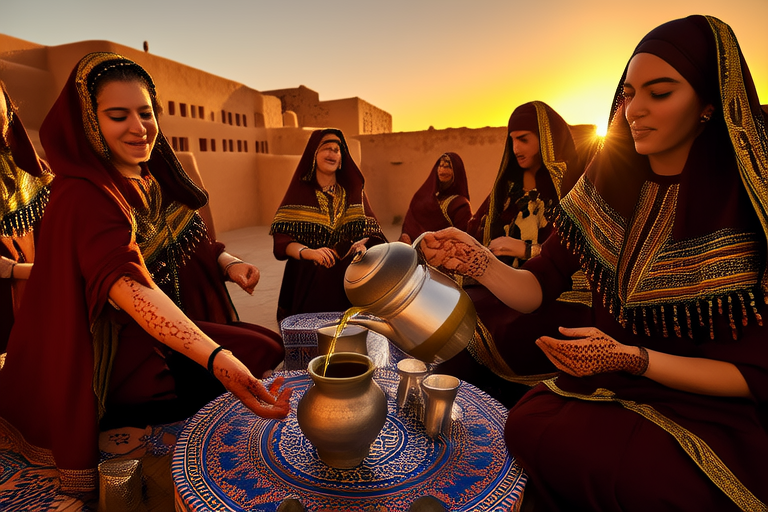Cultural Customs Unveiled: Celebrating Diversity Worldwide

Cultural Customs Unveiled: Celebrating Diversity Worldwide
Introduction
In today’s increasingly interconnected world, the celebration of cultural diversity is more important than ever. Each culture brings a unique set of customs, traditions, and values that contribute to the rich tapestry of human experience. Understanding and appreciating these differences fosters mutual respect, promotes dialogue, and enriches our lives in countless ways.
This article explores various cultural customs from different parts of the world, highlighting their significance and how they contribute to the rich tapestry of global diversity. We will delve into festivals and celebrations, traditional clothing and fashion, culinary traditions, art and architecture, and religious practices and beliefs. By examining these elements, we can gain a deeper appreciation for the world’s many cultures and the beauty of human expression.
Festivals and Celebrations
Festivals are vibrant expressions of cultural identity, often marked by colorful ceremonies, music, dance, and food. One of the most widely celebrated festivals is Diwali, the Festival of Lights, in India. This five-day event commemorates the triumph of light over darkness and good over evil. Homes are decorated with lamps and candles, and families gather to share sweets and fireworks. Another notable festival is Carnival in Brazil, known for its elaborate parades, costumes, and samba dancing. It is a time of joy and revelry, culminating in the Mardi Gras celebrations before Lent.
The Chinese New Year, also known as Spring Festival, is a significant event in Chinese culture, symbolizing the beginning of a new year and the renewal of life. Families come together to feast, exchange gifts, and participate in dragon and lion dances. These festivals not only celebrate the past but also look forward to the future, reinforcing community bonds and shared values.
Traditional Clothing and Fashion
Traditional clothing is a powerful expression of identity and pride in one’s heritage. In Japan, the kimono is a quintessential example of this. Made from silk and intricately patterned, it is worn during formal occasions such as weddings and tea ceremonies. The kimono’s design reflects the wearer’s social status and age, with different colors and patterns reserved for specific events.
The sari, a long piece of unstitched cloth draped elegantly around the body, is a hallmark of Indian fashion. Worn by women, it can be adorned with intricate embroidery and gold thread, symbolizing elegance and grace. Similarly, the fez, a red felt hat with a tassel, is iconic in Moroccan culture, often worn during festive occasions and religious ceremonies. These garments not only serve as symbols of cultural heritage but also play a crucial role in preserving traditional craftsmanship.
Culinary Traditions
Cuisine is another essential aspect of cultural identity, reflecting regional flavors, ingredients, and preparation methods. Sushi, originating from Japan, is a prime example of this. Consisting of vinegared rice topped with fresh seafood, vegetables, and seaweed, it is both a delicacy and an art form. The precision and care involved in preparing sushi highlight the importance of balance and harmony in Japanese cuisine.
In Spain, paella is a beloved dish, typically prepared with rice, saffron, vegetables, and seafood or meat. Its preparation is a communal activity, often enjoyed during family gatherings or outdoor picnics. In Mexico, tacos are a staple food, offering endless variations based on fillings such as beef, chicken, fish, or vegetables. These dishes not only nourish the body but also bring people together, creating lasting memories and connections.
Art and Architecture
Art and architecture are vital expressions of cultural identity, often showcasing the ingenuity and creativity of a society. The Taj Mahal in India is a masterpiece of Mughal architecture, built as a mausoleum for the emperor’s beloved wife. Its white marble domes and intricate carvings reflect the love and devotion that inspired its construction. Similarly, the Great Wall of China stands as a testament to the engineering prowess of ancient civilizations, stretching thousands of miles across rugged terrain.
The pyramids of Egypt are iconic symbols of ancient Egyptian civilization, constructed as tombs for pharaohs. Their precise alignment and monumental scale demonstrate the advanced knowledge of astronomy and mathematics possessed by the builders. These architectural marvels continue to inspire awe and admiration, serving as reminders of the enduring legacy of human achievement.
Religious Practices and Beliefs
Religion plays a central role in shaping cultural identity, providing a framework for moral and ethical behavior. Hinduism, practiced predominantly in India, emphasizes the importance of dharma (duty), karma (action), and moksha (liberation). Key rituals include puja (worship) and pilgrimage to sacred sites such as Varanasi and the Himalayas. Similarly, Islam places great emphasis on the Five Pillars of Faith, which include prayer, fasting, almsgiving, and pilgrimage to Mecca.
Christianity, with its focus on the teachings of Jesus Christ, celebrates events such as Christmas and Easter, marking the birth and resurrection of Jesus. Buddhist practices, centered around achieving enlightenment, involve meditation, chanting, and offerings at temples. These diverse religious practices foster unity and respect among people of different faiths, promoting peace and understanding.
Conclusion
In conclusion, the exploration of cultural customs from around the world reveals the depth and richness of human experience. From festivals and celebrations to traditional clothing, cuisine, art, and architecture, each element contributes to the unique tapestry of global diversity. By embracing and celebrating these differences, we enrich our lives and promote mutual understanding. We encourage readers to explore more about the fascinating customs and traditions mentioned in this article, fostering a greater appreciation for the world’s many cultures.